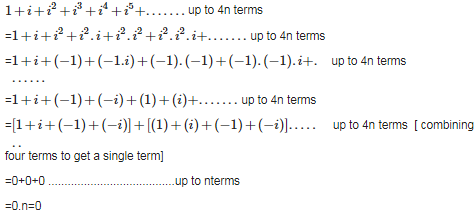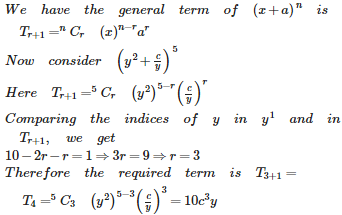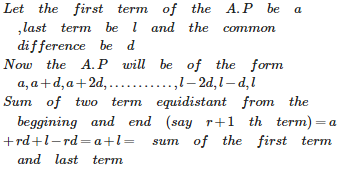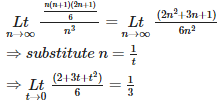CBSE 11TH MATHEMATICS - Online Test
Q1. up to 4n terms is equal to
Answer : Option A
Explaination / Solution:


Q2. If A = { 2,3,4,8,10 } ,B = { 3,4,5,10,12 } and C = { 4,5,6,12,14 } , then (A∩B)∪(A∩C) then
Answer : Option C
Explaination / Solution:


Q3. The coefficient of y in the expansion of is
Answer : Option C
Explaination / Solution:


Q4. Which of the following is correct ?
Answer : Option A
Explaination / Solution:
Given 0 -7
Multiplying throughout by -1,we get0 7 [ When both sides of an inequality are multiplied by a negative number ,then the sign of inequality is reversed]
Q6. The sum of terms equidistant from the beginning and end in A.P. is equal to
Answer : Option D
Explaination / Solution:


Q7. The most stable measure of central tendency is
Answer : Option C
Explaination / Solution:
because takes into account every value in the given set of data to provide the average
Q8.
The line which passes through the point ( 0 , 1 ) and perpendicular to the line x – 2y + 11 = 0 is
Answer : Option A
Explaination / Solution:
The line which is perpendicular to the given line is 2x + y + k = 0
Since it passes through (0,1)
2(0) + 1 + k = 0
This implies k = -1
Hence the equation of the required line is 2x + y - 1 = 0
Q9. ∼p∨∼q is logically equivalent to
Answer : Option B
Explaination / Solution:
The answer is rule of negation for ∼(p→∼q)≡∼p∨∼q
Q10.
For each n N , n (n + 1 ) ( 2n + 1 ) is divisible by :
Answer : Option A
Explaination / Solution:
When n = 1 the value is 6 . The subsequent substitution will give the value as a multiple of 6.

